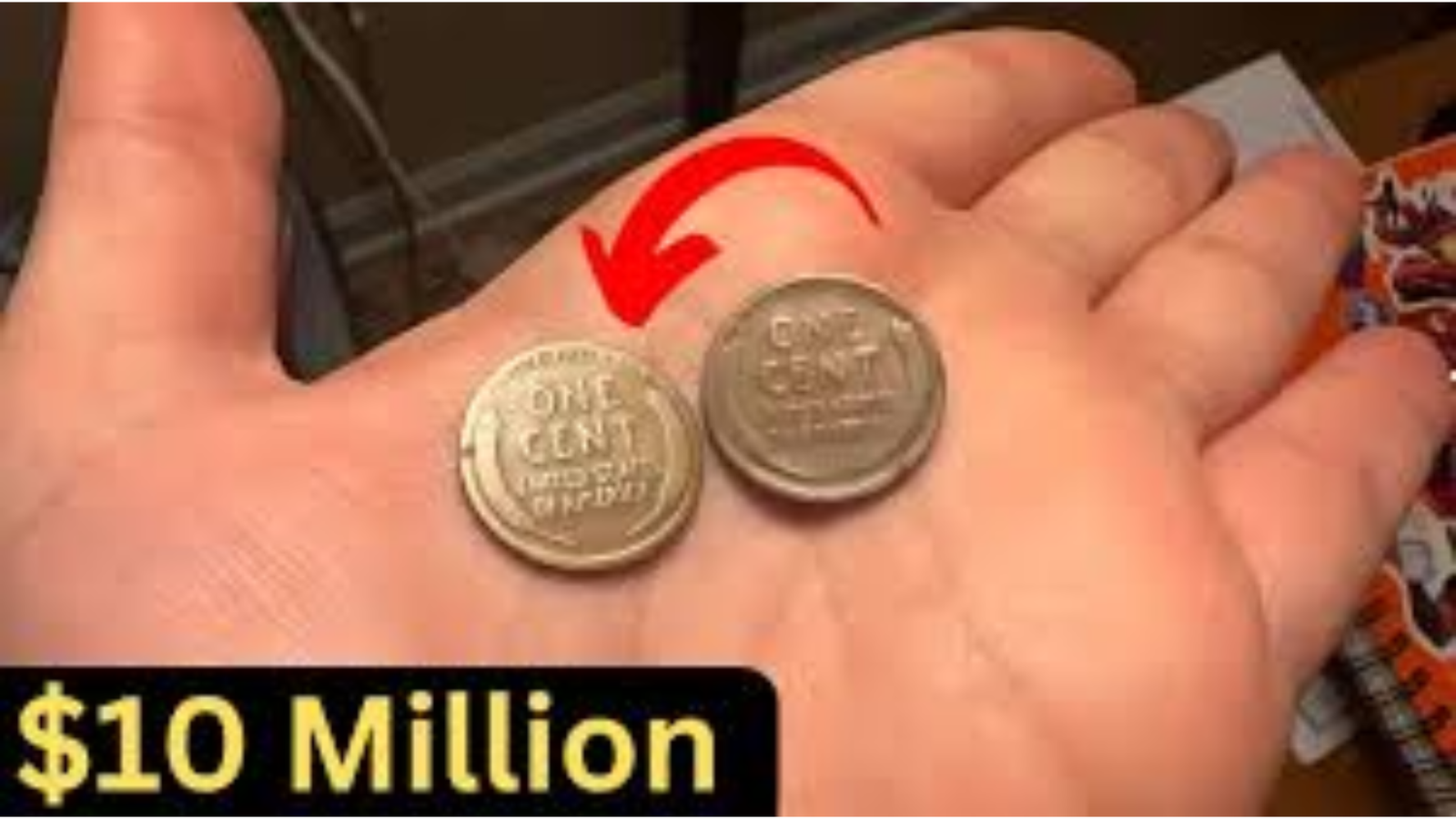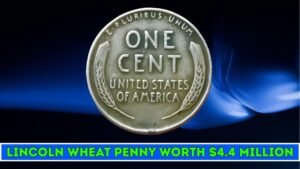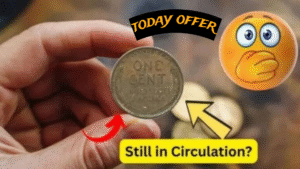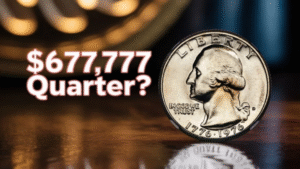$10 Million Lincoln Wheat Penny: The Lincoln Wheat Penny, also called the Wheat Cent, debuted in 1909 to honor Abraham Lincoln’s 100th birthday. It was groundbreaking—the first U.S. coin to show a real president’s face, replacing symbolic designs like the Indian Head penny.
Design and Minting Basics
Designed by Victor David Brenner, the front features Lincoln’s profile facing right, with “IN GOD WE TRUST” above, “LIBERTY” to the left, and the year below. A small “D” or “S” under the date marks Denver or San Francisco mints; no mark means Philadelphia.
The back displays two wheat stalks framing “ONE CENT” and “UNITED STATES OF AMERICA,” earning its “Wheat” nickname. Mostly 95% copper, the pennies switched to steel in 1943 to save metal for World War II, though rare copper errors slipped through. Over 50 years, billions were minted, circulating through the Great Depression, wars, and booms. Today, they’re common in change jars, but rare ones fetch huge sums.
Why Some Wheat Pennies Are Worth Millions
Most Wheat Pennies are worth just a cent, but some soar to thousands or millions due to rarity, condition, or minting mistakes. Grading services like PCGS or NGC score coins from 1 (worn) to 70 (perfect), and top grades drive big prices.
Key Factors for High Value
Here’s what makes a penny valuable:
- Low Production Years: Dates with fewer coins, like 1943 Bronze, are scarce.
- Mint Errors: Mistakes like doubled letters or wrong metals create unique pieces.
- Condition and Shine: Bright, red-toned (RD) coins beat aged, brown (BN) ones.
- Collector Buzz: Historical ties and auction trends boost demand.
These elements turn everyday pennies into collector’s treasures.
Debunking the $10 Million Myth: The Real Star
Online stories from 2024 claim a retiree found a 1914-D Wheat Penny in grocery change, fetching $10 million at auction. It’s a thrilling tale, but no verified sale matches this figure—it’s likely clickbait. The true record-holder is the 1943-D Bronze Penny, a wartime error that sold for $1.7 million in 2010, with estimates now reaching $2.3 million due to rising demand. Found in a boy’s lunch money decades ago, this copper flub from Denver’s steel-only year is one-of-a-kind, graded MS-52 BN with a warm glow.
Other Rare Wheat Pennies to Hunt For
Beyond the 1943-D Bronze, several varieties spark excitement. Keep these on your radar:
Top Varieties with Big Payoffs
- 1909-S VDB: Brenner’s initials caused a stir, pulled early; top grades hit $168,000.
- 1914-D: Low mintage of 1.2 million; MS-66 RD sold for $158,000.
- 1922 No D: Missing mint mark from a worn die; up to $40,000.
- 1931-S: Low mintage of 866,000; MS-66 RD at $48,000.
- 1955 Doubled Die: Blurry lettering error; MS-65 RD at $114,000.
These coins mix history and rarity, making them prime targets.
Value Chart: Top Wheat Pennies at Auction
Check this table for key varieties and their recent high-grade sale ranges (based on auctions from 2010-2025). Prices shift, so get expert appraisals.
| Variety | Special Trait | Mint Mark | High-Grade Value Range | Recent Auction Year |
|---|---|---|---|---|
| 1943-D Bronze | Wartime copper error | D | $1M – $2.3M | 2010 |
| 1909-S VDB | Initials controversy | S | $50,000 – $168,000 | 2022 |
| 1914-D | Low production year | D | $75,000 – $158,000 | 2018 |
| 1922 No D | Missing mint mark error | None | $10,000 – $40,000 | 2023 |
| 1931-S | Scarce Depression-era mint | S | $5,000 – $48,000 | 2024 |
| 1955 Doubled Die | Visible doubling on front | None | $50,000 – $114,000 | 2018 |
This guide shows why checking details pays off.
How to Spot Valuable Wheat Pennies in Circulation
With billions minted, Wheat Pennies still turn up in grocery change, bank rolls, or old jars. Here’s how to hunt:
- Check Dates: Focus on 1909-1919, 1922, 1931, 1943, 1955.
- Look for Mint Marks: “S” or “D” with rare dates signals value.
- Spot Errors: Find doubled text, missing marks, or bronze in 1943.
- Assess Condition: Bright, sharp details mean higher worth.
- Weigh It: Copper pennies hit 3.1 grams; 1943 steel ones are 2.7 grams.
Grab penny rolls from banks (50 cents for 50) or check estate sales. Apps like CoinSnap help with quick IDs, but pros confirm big finds.
Tips for New Collectors and Sellers
New to coin hunting? Follow these steps:
- Handle Carefully: Use gloves to avoid smudges; store in acid-free holders.
- Don’t Clean: Polishing ruins natural shine and value.
- Get Graded: PCGS or NGC grading boosts sales by 20-50%.
- Sell Smart: Coin shops for quick cash; eBay for commons; auctions like Heritage for rarities.
- Join Communities: Reddit’s r/coins or CoinTalk share tips and spot fakes.
Patience makes the hunt fun, even without a jackpot.
Conclusion: Your Change Could Fund Your Future
The $10 million tale may be hype, but Lincoln Wheat Pennies like the $1.7 million 1943-D Bronze prove fortunes hide in grocery change. These coins, tied to America’s grit through wars and hardship, turn cents into dreams. Check your change with a magnifier—your next penny could be a retiree’s windfall. Start hunting today!
FAQ: Lincoln Wheat Penny Hunt Essentials
Is there a $10 million Wheat Penny?
No, it’s 2024 clickbait. The top sale is a 1943-D Bronze at $1.7 million, now valued up to $2.3 million.
Why is the 1943 Bronze so valuable?
Only one from Denver exists—a wartime copper error. Scarcity and history drive its price.
How to spot a 1943 Bronze error?
It’s copper-colored, weighs 3.1 grams (not 2.7 like steel), and won’t stick to magnets.
Are Wheat Pennies still in circulation?
Yes! Billions exist, so check change, bank rolls, or old stashes for rare dates.
Where to sell a valuable penny?
Local shops for fast sales; Heritage or Stack’s Bowers for top auction prices.




